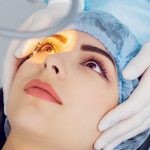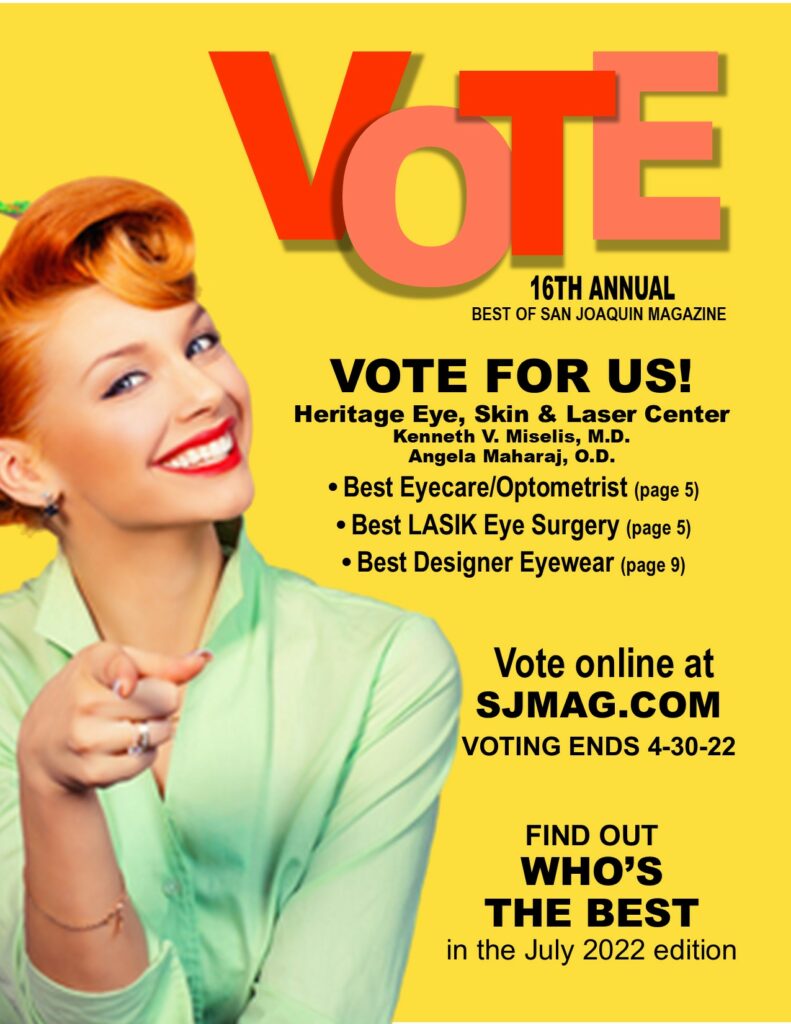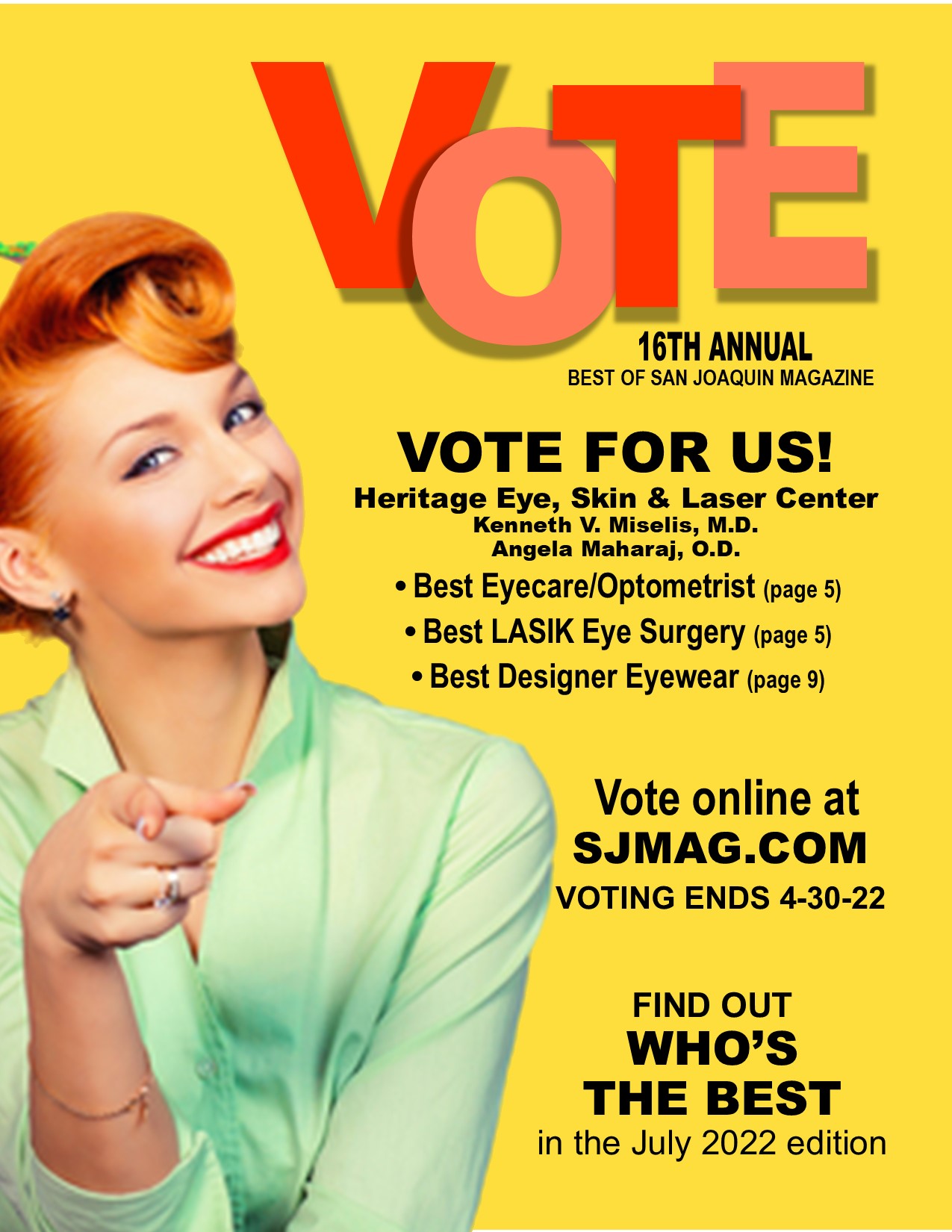
LASIK is a laser vision correction procedure that can correct nearsightedness, farsightedness, and astigmatism, thereby reducing or eliminating the need for glasses or contact lenses. LASIK is considered to be a safe, accurate, and permanent procedure.
Your First Step Towards Freedom from Glasses and Contacts
 You’ll begin your LASIK experience with a free consultation. First, you’ll have some preliminary eye tests and evaluations, then you’ll meet with Dr. Kenneth Miselis, our LASIK Surgeon. Dr. Miselis will get to know you, your eyes, your health, and determine if you are a candidate for the procedure. This is a great opportunity to get a feel for our office, the staff, and your surgeon.
You’ll begin your LASIK experience with a free consultation. First, you’ll have some preliminary eye tests and evaluations, then you’ll meet with Dr. Kenneth Miselis, our LASIK Surgeon. Dr. Miselis will get to know you, your eyes, your health, and determine if you are a candidate for the procedure. This is a great opportunity to get a feel for our office, the staff, and your surgeon.
Afterward meeting with Dr. Miselis, you’ll meet with our LASIK Counselor, who will further discuss the procedure, and answer any questions or concerns you may have. If you decide to schedule the procedure, your LASIK Counselor will be available to you from start to finish.
Why is it called High Definition Custom LASIK?
It is called High Definition Custom LASIK because every procedure we do is a customized for each patient. First, we begin with creating an individualized treatment plan at your pre-op appointment. To develop your customized treatment plan, we use state-of-the-art diagnostic equipment to examine your eyes and obtain highly accurate measurements. This customized treatment plan ensures very precise surgical outcomes for our LASIK patients.
Next, we perform a test using wavefront technology Every patient’s cornea is completely unique, like a fingerprint. The wavescan scans the front of the eye and generates a 3D model of the cornea and the lens. Dr. Miselis will use the results to identify and treat tiny visual imperfections called higher-order aberrations. Therefore, we are able to zero in on and correct these unique, microscopic imperfections that cannot be corrected with glasses or contact lenses. That is why High Definition Custom LASIK at Heritage Eye, Skin & Laser Center is truly a customized and much more effective treatment.
What is the procedure like?
 LASIK is typically a painless procedure. Before the procedure, you’re given medication to help you relax. Numbing eye drops are applied to your eyes to prevent any discomfort during the procedure. Although you may feel some pressure on your eye, the laser portion of the procedure is painless.
LASIK is typically a painless procedure. Before the procedure, you’re given medication to help you relax. Numbing eye drops are applied to your eyes to prevent any discomfort during the procedure. Although you may feel some pressure on your eye, the laser portion of the procedure is painless.
LASIK is also a very quick procedure. The actual laser portion of the treatment only takes 20-50 seconds.
The procedure is a three-step process. First, Dr. Miselis creates a small hinged flap on the cornea. Second, Dr. Miselis folds the flap back and reshapes the cornea with the laser. The cornea is reshaped so that it can focus light precisely and evenly. When the cornea is the right shape, it is able to produce crisp, sharp vision. Lastly, Dr. Miselis closes the flap.
Who would be considered a good candidate?
 Over 94% of the eligible population are good candidates for LASIK. A good candidate is someone who is over 18 with a stable prescription (for at least one year). In addition, it is also important to have corneas that are thick enough. We measure the thickness of your cornea when you come in for the consultation. If your cornea is too thin or you have corneal scarring, there may be other vision rejuvenation procedures with different requirements.
Over 94% of the eligible population are good candidates for LASIK. A good candidate is someone who is over 18 with a stable prescription (for at least one year). In addition, it is also important to have corneas that are thick enough. We measure the thickness of your cornea when you come in for the consultation. If your cornea is too thin or you have corneal scarring, there may be other vision rejuvenation procedures with different requirements.
There are certain conditions and factors which can increase your risk of an undesirable outcome or limit optimal results. These include:
- Chronic dry eyes
- Too thin or irregular corneas
- Large pupils
- High refractive error
- Women who are pregnant or nursing
- Unstable vision
- If you have certain degenerative or active autoimmune disorders
Recovery and Results
 For the recovery period, you will need a ride home after the procedure. In addition, you will also need to wear protective eye shields while sleeping for a couple of weeks after the procedure to protect your eyes while they heal. Lastly, you will need to use anti-inflammatory eye drops, antibiotic eye drops, and artificial tears to keep your eyes well moisturized.
For the recovery period, you will need a ride home after the procedure. In addition, you will also need to wear protective eye shields while sleeping for a couple of weeks after the procedure to protect your eyes while they heal. Lastly, you will need to use anti-inflammatory eye drops, antibiotic eye drops, and artificial tears to keep your eyes well moisturized.
As a result, most of our patients experience better vision almost immediately after having High Definition Custom LASIK. Your vision will continue to improve over the next few months as your eyes stabilize.
Ultimately, the majority of our patients achieve 20/20 vision or better. In addition, the procedure frequently produces an improvement in overall visual clarity when compared with glasses and contacts.
If you would like a LASIK Consultation, please call our office at 209.465.5933 or call our LASIK Department directly at 209.932.0220.
Social Media
Find us on:
Facebook YouTube Google Reviews Yelp


by Cathleen McCarthy
Annual eye exams are always a good idea, but sometimes you need to pick up the phone and schedule an urgent care visit to the eye doctor.
Some eye conditions can lead to further complications and vision loss. Some vision diagnoses extend beyond your eyes and involve systemic disease.
What are the biggest warning signs?
“Pain is always a driver for an urgent visit,” says Edward Melman, OD, Vision Source administrator in New Jersey. “That is one of the main signs of infection or inflammation and should always be evaluated as soon as possible, since the earlier an infection or inflammatory condition is treated the better the chance for a good recovery.”
Pain is just one of the reasons why you should run, not walk, to the eye doctor.
These seven eye-care emergencies require immediate medical attention:
1. Traumatic eye injury/accidents
“Eye emergencies can cover a range of incidents and conditions, but the most common are due to accidents,” says Barbara Horn, OD and president of the American Optometric Association (AOA).
Accidents usually mean something has gotten into the eye, but an injury or burn affecting the eye area is also worth getting checked by a vision care professional. Serious injuries can cause swelling, redness, light sensitivity, double vision or pain.
“Without proper treatment, eye injuries can lead to partial or even permanent loss of vision,” Horn says.
After any trauma to the eye, apply a cold compress without putting pressure on the eye to reduce pain and swelling. Severe pain or reduced vision require immediate care from an eye doctor.
If you cut or puncture your eye or eyelid, do not wash out the eye and never attempt to remove an object penetrating the eye. Cover the eye with a rigid shield, like the bottom half of a paper cup, and see an eye doctor immediately.
2. Foreign body or chemical burn
If you get chemicals in your eye, flush out your eye with saline (preferably) or water for 15 minutes. If you’re wearing contact lenses, attempt to remove them first.
“Do not try to neutralize the chemical with some other chemical or substance,” says Horn. And don’t bandage it. Flush thoroughly, then get to an eye care professional.
If you get a particle in your eye, avoid rubbing it. Try to let your tears wash out the speck or irrigate the eye with a saline solution or artificial tears. A forceful steady stream from the saline bottle directed at the foreign particle may be able to dislodge it from the front surface of the eye.
If the particle does not wash out, keep the eye closed, bandage it lightly and seek medical care.
“Some particles, particularly metallic ones, can cause rusting spots on the eye if left untreated for several days,” Horn warns. “If you are unsure if the object is gone, do not delay medical care.”
3. Noticeable vision changes
Sudden or noticeable change in the quality of your vision must be addressed quickly. Vision changes often indicate a retinal or corneal defect that can cause permanent vision loss if left untreated.
One such defect is retinal detachment. If you are seeing flashing lights and spots and/or a shower of floating spots from within the eye, you may have a detached retina.
Changes in vision can be a symptom of stroke, nerve damage or other neurological issues.
Pain in the temples, headache, pain after chewing, hip pain and fever combined with blurred vision may indicate temporal arteritis, a serious condition where the temporal arteries supplying blood to the head and brain become inflamed or damaged.
“Corneal swelling or infection can also cause sudden vision loss,” Melman says. “For any of these conditions, it is critical to have an accurate diagnosis and treatment plan.”
4. A red eye
“If you have red eye accompanied by discharge, you need to have it evaluated as soon as possible,” says Dr. Melman. He believes it is best to be evaluated by an eye doctor.
“Most urgent care or ER centers will automatically prescribe an antibiotic,” Melman said. “That is really only appropriate for bacterial conjunctivitis.” Conjunctivitis (pink eye) is quite common in young children and is often viral and contagious, he says.
Roughly 80 percent of acute infectious pink eye is viral. “It is very important to treat this early,” Melman says.
A condition called corneal infiltrates (opaque spots on the cornea) may develop s a few weeks after pink eye; it should be treated to avoid affecting vision.
Pink eye can be confused with the more serious uveitis or ocular herpes, which can be sight threatening. Whenever possible, eye redness should be evaluated by a vision-care specialist who can differentiate the type of conjunctivitis and prescribe the proper treatment.
5. Different size pupils (pupil aniscicoria)
If your pupils are not the same size, you may have anisocoria. You can be born with this condition (which is benign) or it can develop later in life due to direct eye trauma or an underlying condition.
Anisocoria can be a symptom of several maladies, including head trauma or other neurological causes such as a stroke or brain tumor.
So, if you see a noticeable difference in pupil size, whether constant or intermittent, you should be evaluated by your eye doctor.
6. Bulging eyes (proptosis/exopthalmos)
Bulging eyes can be caused by many conditions, some more serious than others.
An injury to the eye socket or abnormal blood vessels behind your eye can cause it to bulge. Protruding eyes can also indicate a thyroid condition called Graves’ disease or eye sock problems such as inflammation, tumors or bacterial infections.
A bacterial infection that causes an eye bulge is an emergency. If not treated properly, a condition that presents as a very swollen lid (preseptal cellulitis) can allow the infection can spread from your eye socket and possibly affect the brain (orbital cellulitis). Orbital cellulitis is sight threatening.
7. Headaches, glaucoma and family history
“I had a very disturbing case recently of a 53-year-old woman who had been feeling pressure and chronic mild headaches in her forehead,” Melman says. “She had always had good vision and never had a professional eye examination.”
This woman’s visual fields showed advanced glaucoma damage, which is not reversible. She initially denied any family history of glaucoma but when she spoke to her parents, she learned that both were being treated with glaucoma medicine and had never told their children.
This is more than a cautionary tale about ignoring your eye symptoms, Melman says. It’s also a lesson in the importance of discussing medical issues with family.
“Please everyone, find out the details of your family history,” Melman says. “Talk to your parents about this periodically and get regular eye exams.”
When glaucoma is detected early, it is treatable and vision loss is minimized.
Other Warning Signs
In addition to the conditions above, the American Optometric Association recommends seeking medical attention if you experience:
- eye burning or stinging
- one eye not moving like the other
- decreased or double vision
- light sensitivity
- bruising and/or bleeding around the eye
- blood in the white of the eye
- discharge from the eye
- severe itching
- new or severe headaches

Children and technology: Protecting your child’s eyes
By Gary Heiting, OD

Children and technology are practically inseparable these days. Whether for educational purposes or just fun, children are spending a good portion of their day on “screen time” — staring at the LED screens of computers, tablets, smartphones and other digital devices.
According to Common Sense Media, children under age 8 now spend more than two hours a day with screen media. For 8- to 10-year-olds, screen time triples to six hours a day. And it’s not unusual for kids in middle school and high school to spend up to nine hours per day looking at digital displays.
If you’re wondering if all this screen time might cause problems for your child’s eyes and vision, the short answer is: “Yes, it does.”
Risks associated with too much screen time
Children who spend multiple hours staring at digital devices are at risk of developing these vision-related problems:

Too much unsupervised computer work may cause vision problems for kids.
Computer Vision Syndrome
Computer vision syndrome— also called digital eye strain — is a condition that’s caused by visual stress from extended screen time.
Computer vision syndrome has a combination of symptoms, including: fluctuating vision, tired eyes, dry eyes, headache and fatigue. Other non-visual symptoms of computer vision syndrome include neck, back and shoulder pain.
Blue-light glasses and computer glasses can offer relief from digital eye strain.
Unhealthy posture
When using a computer or digital device for prolonged periods, it’s common to start slouching inward, rounding the back and shoulders, and then tilt the head back and jut the chin forward. This unnatural (and unhealthy) posture — called “turtling” — leads to many of the non-visual symptoms of computer vision syndrome.
Nearsightedness
Vision researchers believe increased screen time among children is a significant risk factor for the development and progression of nearsightedness (myopia). The prevalence of myopia has grown significantly in the last few decades and this trend coincides with the increased use of computers and digital devices by children.
Increased exposure to blue light
High-energy visible light called blue light is emitted by the LED screens of computers, tablets, smartphones and other digital devices. Although the most significant source of blue light exposure is natural sunlight, many researchers and eye doctors are concerned that the added blue light exposure from computers and digital devices might increase a person’s risk of age-related eye diseases like macular degeneration later in life.

Digital devices such as tablets can cause eye strain in kids,
so monitor their use as well as that of desktops and laptops.
What To Do
It’s not realistic to think that children will stop using modern technology. But there are some easy things you can do to decrease your child’s risk of eye and vision problems from prolonged use of computers and digital devices:
Encourage frequent visual breaks
One of the best things you can do to reduce your child’s risk of digital eye strain is to get them to follow the “20-20-20” rule: Every 20 minutes, take your eyes off your screen and look at something that’s at least 20 feet away for at least 20 seconds.
This simple task relaxes the focusing and eye alignment muscles, reducing the risk of many of the symptoms of digital eye strain.
The 20-20-20 rule also might decrease the risk of myopia progression. Some research suggests focusing fatigue may be associated with the onset and worsening of myopia. Taking frequent breaks from staring at digital screens helps reduce this fatigue.
Encourage frequent posture checks
The time taken to follow the 20-20-20 rule is also a good time to sit up straight and realign the head, neck and shoulders. Moving the head slowly to the right and left and also up and down can relieve strained muscles and reduce fatigue.
If it’s possible, getting up to walk and stretch the entire body also is a good idea to reduce the risk of non-visual symptoms of computer vision syndrome.
Protect their eyes from blue light
Currently, no one knows for sure how damaging the added exposure to blue light emitted by computer screens and digital devices might be to a child’s eyes over time. It may take researchers decades to sort that out.
In the meantime, it’s prudent to protect your child’s eye from blue light from both sunlight and digital devices.
Outdoors, polarized sunglasses offer the best protection from glare and blue light, blocking roughly 90 percent or more of the sun’s harmful blue light.
For indoor and outdoor wear, photochromic lenses such as Transitions lenses are an excellent choice.
For indoor wear, eyeglass lenses with an integrated blue light filter are a good choice.
Be aware that different eyeglass lens companies may measure blue light filtration properties differently, and lenses with the most effective blue light filters have a tint that will affect the appearance of these lenses.
Finally, certain anti-reflective coatings can help eyeglass lenses filter blue light.
Establish media-free times
It’s a great idea to establish media-free times each day to break your child’s fixation on digital devices, reduce eye fatigue, and limit blue light exposure. Use this time to connect as a family.
Schedule annual eye exams
Finally, schedule annual eye exams for your children prior to the start of every school year.
In addition to making sure your child’s eyes are healthy and seeing well, your can perform special tests and provide specific suggestions to reduce the risk and symptoms of computer eye strain.
Children and technology are the future. Taking these simple measures can go a long way toward keeping your tech-savvy child seeing clearly and comfortably for years to come.
Notes and References
Centers for Disease Control and Prevention. www.cdc.gov/nccdphp/dnpao/multimedia/infographics/getmoving.html. January 2018.
The Common Sense census: Media use by kids age zero to eight. Common Sense Media. https://www.commonsensemedia.org/research/the-common-sense-census-media-use-by-kids-age-zero-to-eight-2017. October 2017.
American Academy of Pediatrics announces new recommendations for children’s media use. American Academy of Pediatrics. www.aap.org/en-us/about-the-aap/aap-press-room/Pages/American-Academy-of-Pediatrics-Announces-New-Recommendations-for-Childrens-Media-Use.aspx. October 2016.

Diabetes: What It Is, Prevention, and Its Affect on the Eyes
What is Diabetes?
Diabetes is the condition in which the body does not properly process food for use as energy. This causes glucose (sugar) to build up in the blood. Too much glucose in the blood can cause damage throughout the body, including the heart, kidneys, feet, teeth, skin, blood vessels in the body, and the small blood vessels in the eyes. In the United States alone, there are 29.1 million people diagnosed with diabetes and it is the seventh leading cause of death.
Can Diabetes Be Prevented?
Type 1 Diabetes (a total lack of insulin available to control the body’s glucose levels) cannot be prevented but those with the disease can help prevent or delay the development of complications by keeping their blood sugar in a target range and by having regularly scheduled medical exams and dilated eye exams to detect early signs of complications.
Type 2 Diabetes (insufficient insulin in the body or the body unable to use it as it should), on the other hand, can, in most cases, be prevented. Research studies have found that moderate weight loss and exercise can prevent or delay Type 2 Diabetes. According to the Diabetes Research Council, with the correct treatment and lifestyle changes, many people with diabetes are able to prevent or delay the onset of complications. For more information on a “wellness approach to diabetes”: https://www.diabetesresearch.org/document.doc?id=260
Does Diabetes Affect the Eyes?
Diabetes does affect the eyes and can cause cataracts, glaucoma, and diabetic retinopathy.
What are Cataracts?
Cataracts is a condition where the eye’s naturally clear lens becomes cloudy, or opaque. With diabetes, uncontrolled blood sugar levels speed up the development of cataracts in adults and younger people as well.
What is Glaucoma?
Glaucoma is a disease that occurs when too much fluid builds up in the front part of the eye. This fluid buildup increases the pressure within the eye, which, in turn, damages the optic nerve. According to the National Eye Institute, glaucoma is sometimes called “silent thief of sight” because it slowly damages the eyes and can cause irreparable harm before there are symptoms.

There are treatments to delay vision loss, but no cure, making it a leading cause of blindness all over the world. According to the Glaucoma Foundation, there is considerable evidence that having Type 2 Diabetes along with the duration of the disease, and having uncontrolled blood sugar levels increases the risk of developing primary open angle glaucoma (the most common type of glaucoma).
What is Diabetic Retinopathy?
Diabetic retinopathy is a condition of the eye in which the blood vessels in the retina swell, leak, close off completely, or abnormal new blood vessels grow on the surface of the retina. Between 12,000 and 24,000 new cases of blindness from diabetic retinopathy occur in the United States each year, according to the CDC, and many could be prevented with early intervention. But a significant percentage of Americans with diabetes are not aware of their risk of vision impairment from the disease.
Oftentimes there are no visual symptoms with diabetic retinopathy, but an examination of the retina can reveal the tiny dot and blot hemorrhages in the eye.







